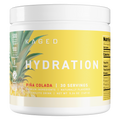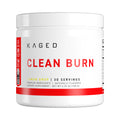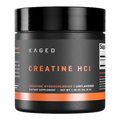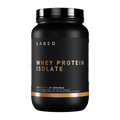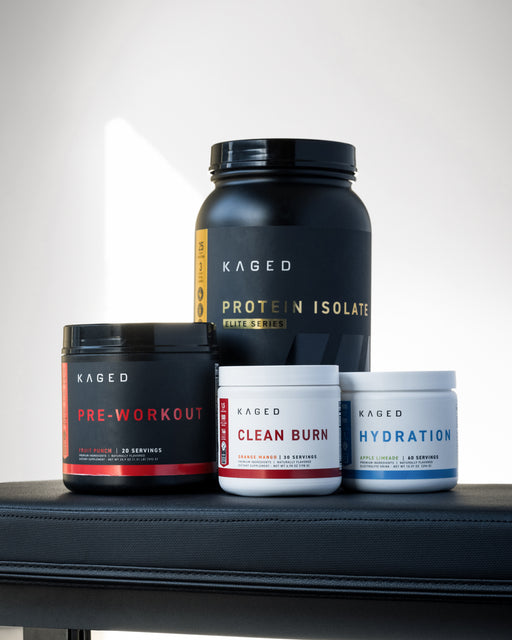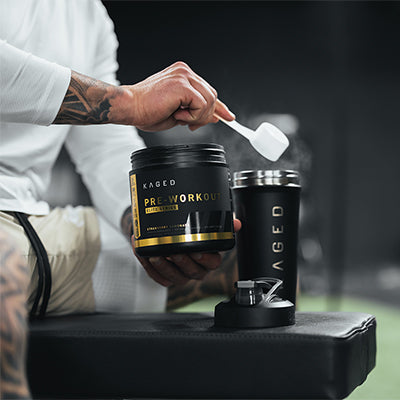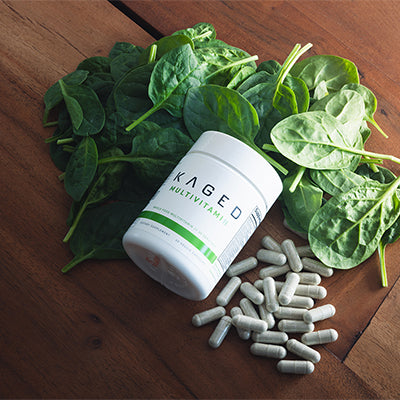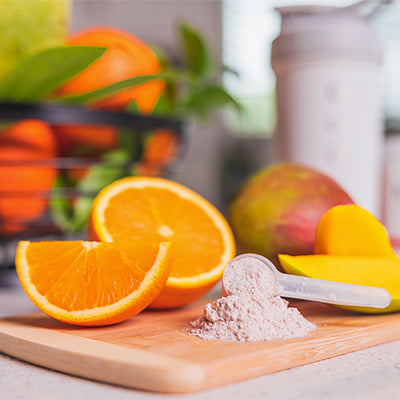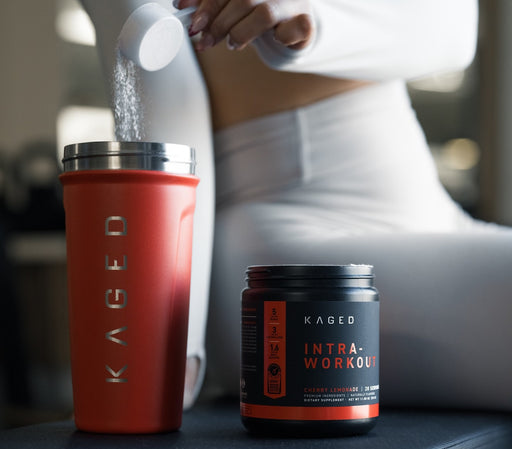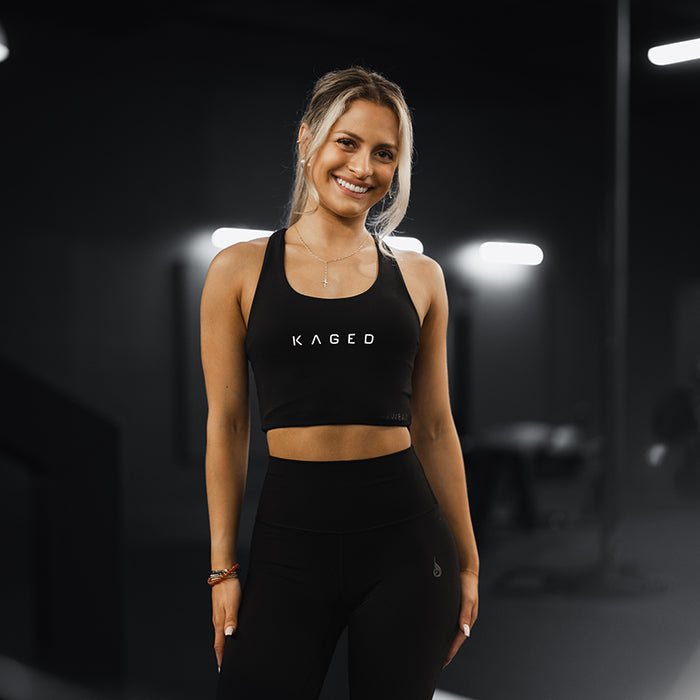You may hear supplement companies, influencers, and athletes talk about “proprietary blends.”
But what does this term mean? Why do companies use them? More importantly, what do they mean for you?
Some companies in the supplement industry pride themselves on using proprietary blends, others pride themselves on NOT using proprietary blends. This can create a confusing situation where you don’t ever hear the full story.
What is a Proprietary Blend?
The word “proprietary” is related to the word “property,” meaning ownership. A proprietary blend is a specific formulation of ingredients, listed and grouped together as a single ingredient. Often, they’re trademarked or patented.
If you look on "Supplement Facts” of any dietary supplement, you may see ingredients like “protein blends” or “greens blend” which then have a whole list of ingredients, like sub-ingredients, underneath them. However, often only the dose of the blend as a whole gets listed, rather than the dose of each ingredient.
This might not sound all bad, but we’ll talk about the hidden reasons why companies turn to them, and why these reasons aren’t always in your best interest.
Why Companies Use Proprietary Blends
When they include ingredients together as a “blend,” companies can conceal the specific doses of the ingredients that make up this blend.
The main reason they claim to use them is that, they argue, it’s like keeping their “secret recipe.” They say they can’t reveal the doses because then other companies can more easily replicate exactly what they put into their products. This is the “copycats'' argument.
Second, oftentimes patented or trademarked ingredients are really a blend of ingredients. If a company uses that patented or trademarked ingredient, that’s how it’s listed on the label.
There is some merit to each of these, and the FDA (Food and Drug Administration) allows proprietary blends to exist, but that’s not the full story.
The Problems With Proprietary Blends
While it makes sense supplement manufacturers won’t want to reveal their formulation, there are a few obvious problems with proprietary blends.
It Can Make The Ingredient List Sound More Impressive
If you can include all of the ingredients you want, but you don’t need to list the dose of each one, then you can include small amounts of some ingredients, often the expensive ones, then much higher amounts of the inexpensive ingredients.
The fact that the product has a small, unknown dose of a great ingredient, doesn’t hold companies back from marketing that it has the ingredient. This can make their ingredient list sound more impressive, without any benefit to you.
It Reduces Their Cost, Plain and Simple
Companies with proprietary blends can use LESS of the expensive ingredients, and MORE of the cheaper ones. This increases their profits, but does nothing for you.
In fact, you may assume you’re getting efficacious doses of important ingredients but this isn’t always the case.
This may sound a bit abstract, so let’s look at a few common examples.
Common Example of Proprietary Blends #1: Greens Drinks
Greens drinks, or superfood drinks, can be an excellent way to get quality fruits and vegetables when you can’t hit your quota of whole-food sources.
They can support digestion, vitality, and even help you manage stress. However, just because a drink is green, doesn’t mean it’s supporting your health.
In many “greens drinks” you’ll see broccoli, kale, blueberry, and other true superfoods, but they’ll be hidden within a proprietary blend. This means you have no idea how much of these you’re really getting.
In reality, your greens drink might contain a ton of fillers like all different kinds of grasses. Now, there are some benefits to some grasses. However, you also want to make sure you’re getting effective doses of the superfoods advertised. If you look at a greens drink and see a proprietary blend with grasses as the first ingredient, your alarm bells should go off.
We created Outlive 100 in part to help buck this trend. In Outlive 100, we use ZERO proprietary blends, so you know and see the exact amount of every ingredient. See our transparent label for yourself:

We include a full gram of spirulina powder, 500mg of blueberry fruit powder, even 300mg of the organic adaptogen, KSM-66 ashwagandha. You know you’re getting quality doses of each of the superfood ingredients.
SHOP OUTLIVE100
Common Example of Proprietary Blends #2: “Blended” Proteins
There are two main forms of whey protein:
- whey protein isolate
- whey protein concentrate
The difference between these two is simple. Whey isolate has fewer impurities and more actual protein. With whey protein isolate, you get less fat, less sugar, less lactose, and more protein. However, it’s more expensive.
Because we know whey protein isolate has these benefits, companies want to tell their customers that they use it. However, they can often conceal this within a “protein blend” that includes whey protein isolate alongside whey protein concentrate. Because it’s a proprietary blend, though, you won’t know how much of each you’re getting.
In all of our Kaged protein powders, we use 100% isolate forms. Our Whey Protein Isolate contains ultra-filtered whey protein isolate and ZERO whey concentrate. Re-Kaged includes this same high-quality protein.
Casein uses 100% micellar casein protein, and Plantein uses a high-quality 100% pea protein isolate with an amino acid profile comparable to whey.
Next time you shop for protein powder, check to make sure you’re not getting a cheap blend.

SHOP KAGED PROTEIN
Common Example of Proprietary Blends #3: Branched-Chain Amino Acids
BCAAs refer to three specific amino acids which play a key role in building muscle: leucine, isoleucine, and valine.
However, we know that leucine is the main driver of what’s called “muscle protein synthesis.” Through its mechanism, it turns on the anabolic switch that helps us build muscle and reduce muscle breakdown.
That means when you buy a BCAA product, make sure they display the ratio of the three. If you see it as “BCAA blend” or some other proprietary blend, then you don’t know the exact amount of each ingredient.
In Kaged BCAA, we put leucine first. It’s a 2:1:1 ratio.

LEARN MORE
While we have three examples here, you can find these across all kinds of different ingredients and different types of products, from multivitamins to pre-workouts to everything in between.
The Kaged Standard: Full Label Disclosure
This has been part of our mission from day one. When you hear us talk about things like “full label disclosure” or “efficacious doses” or “no proprietary blends,” this is what we’re talking about.
With proteins, we provide you with clean, 100% isolate, regardless of the type of protein. Our products like Outlive 100 show you every dose.
In our pre-workouts, we don’t use “pump blends.” We list the dose of every ingredient we use to enhance pump and performance.
We believe this should be the standard of the industry.
The Poison, and The Power, Are In The Dose
As the saying goes, the poison is in the dose. But for effective, proven ingredients, the opposite rings true: the power is in the dose.
If you want supplements to support your goals, whether that’s weight loss, building strength, or just supporting overall well-being, you need quality ingredients in the right dosages. Sure, creatine has proven that it can help build muscle and strength, but you need the right dose.
When we formulate Kaged products, we don’t just look at the ingredients, we look at the dose too. That’s why in Kaged Multivitamin, you’ll see 100% recommended daily value of key vitamins and minerals, and why you’ll see 300mg of KSM-66 Ashwagandha in Outlive 100. Since day one, transparency has been one of our core values.
Appendix: One Trick to Spot a Deceptive Proprietary Blend
While the doses of the ingredients can stay concealed, they’re listed in descending order, from the highest amount to the lowest amount.
This means if you see the superfood, quality ingredients listed towards the end of a proprietary blend, you’re getting less than you are of the first ingredients. Don’t be surprised if the one that’s advertised on the front is the one that’s listed towards the end of the proprietary blend.
